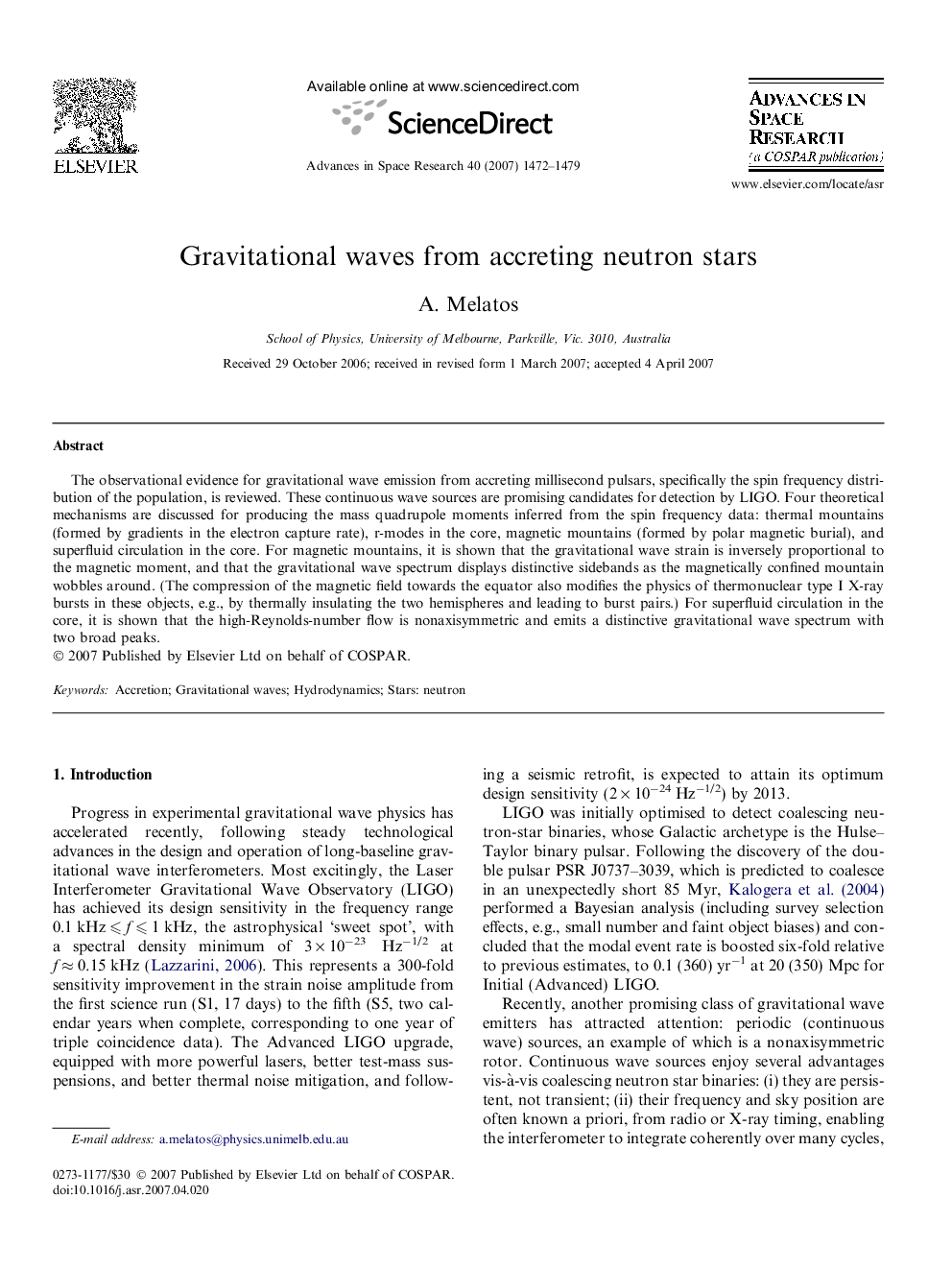| Article ID | Journal | Published Year | Pages | File Type |
|---|---|---|---|---|
| 1766651 | Advances in Space Research | 2007 | 8 Pages |
Abstract
The observational evidence for gravitational wave emission from accreting millisecond pulsars, specifically the spin frequency distribution of the population, is reviewed. These continuous wave sources are promising candidates for detection by LIGO. Four theoretical mechanisms are discussed for producing the mass quadrupole moments inferred from the spin frequency data: thermal mountains (formed by gradients in the electron capture rate), r-modes in the core, magnetic mountains (formed by polar magnetic burial), and superfluid circulation in the core. For magnetic mountains, it is shown that the gravitational wave strain is inversely proportional to the magnetic moment, and that the gravitational wave spectrum displays distinctive sidebands as the magnetically confined mountain wobbles around. (The compression of the magnetic field towards the equator also modifies the physics of thermonuclear type I X-ray bursts in these objects, e.g., by thermally insulating the two hemispheres and leading to burst pairs.) For superfluid circulation in the core, it is shown that the high-Reynolds-number flow is nonaxisymmetric and emits a distinctive gravitational wave spectrum with two broad peaks.
Related Topics
Physical Sciences and Engineering
Earth and Planetary Sciences
Space and Planetary Science
Authors
A. Melatos,
